How to Attach a Ground Sheet to Tent
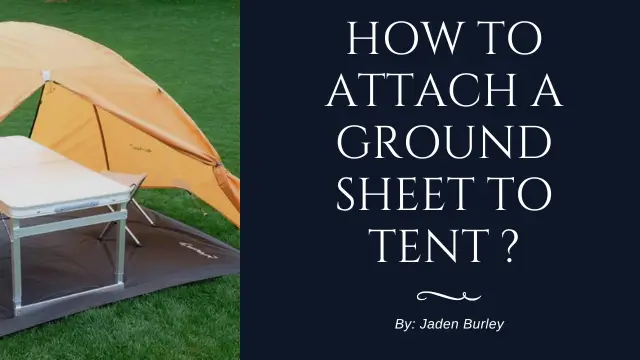
For outdoor lovers, camping isn’t just a hobby—it’s a way to connect with nature and escape routine.
Central to this experience is the tent, your home away from home. The ground sheet, often overlooked, is crucial. It keeps your tent clean and dry, extending its life.
This guide shows how to attach a ground sheet to tent and choose the best method for your camping.
A. Different Types of Ground Sheets
There are many types of ground sheets, each with its own advantages and disadvantages. Understanding each type helps you make an informed choice for your specific camping needs. Here are some common ground sheets:
- Tarps: Tarps are versatile and lightweight, making them suitable for varied camping conditions. They’re waterproof and easy to fold and carry, offering a good balance between durability and portability.
- Mesh/ShadeCloth Ground Sheets: These ground sheets are lighter, making them an excellent choice if weight is a concern, like for backpacking or hiking. However, their lighter weight might not hold up as well in extreme conditions or rough terrain.
- Multi-Mat Ground Sheets: Multi-Mat sheets provide the advantage of versatility. They can serve as ground sheets, awnings, or privacy screens. They’re lighter than most types, but they’re still durable and easy to pack.
- Canvas Ground Sheets: Canvas ground sheets offer comfort and durability. They’re heavier than other types, but their robust material withstands rough terrains and extreme weather conditions.
- PVC Ground Sheets: PVC ground sheets are waterproof and durable, making them suitable for harsh weather conditions. However, they’re heavier and bulkier to carry.
Each of these ground sheets has pros and cons. The best one for you depends on your camping needs, personal comfort, and expected weather conditions.
B. The Best Groundsheets On The Market
Here are some of the best groundsheets on the market:
1. Clostnature Tent Footprint Waterproof Camping Tarp
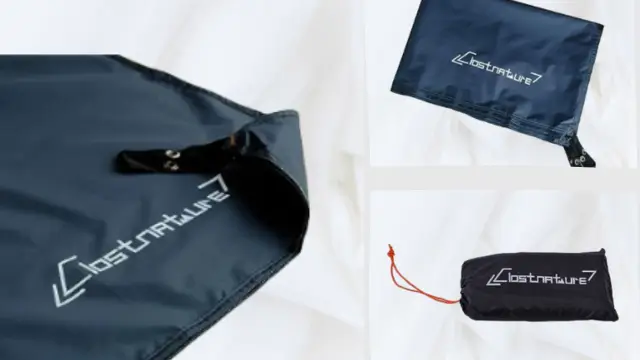
The Clostnature Tent Footprint is a versatile, durable, and lightweight option for outdoor enthusiasts. This 86” x 59” tarp serves as an excellent tent protector and beach mat.
Pros:
- Waterproof and durable
- Lightweight for hiking and backpacking
- Comes with a storage bag
Cons:
- May not fit larger tents
- Not ideal for car camping
- Slightly more expensive
Bonus Tips: it’s best to check tent size compatibility before buying.
2. REDCAMP Tent Footprint UL Waterproof Tarp
Lightweight and compact, this groundsheet is suitable for hiking and family camping. It’s made of PU 2000 waterproof tarp and is seam-sealed to prevent leaks. (Available at Amazon)
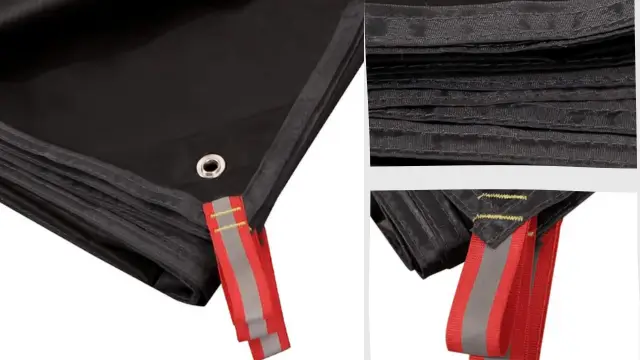
Pros:
- Lightweight and easy to carry
- Waterproof and durable material
- Comes with a drawstring bag
- Provides extra protection for tent
Cons:
- May not fit all tent sizes
- Drawstring bag not very sturdy
- Slightly more expensive than others
This 95″ x 87″ Tarp is a lightweight and durable option for protecting your tent from moisture and wear and tear during outdoor adventures.
3. BISINNA Waterproof Camping Tarp Footprint Mat
The BISINNA Waterproof Camping Tarp Footprint Mat is a versatile and durable option for outdoor enthusiasts.
It measures 82.67”x55”, making it suitable for a 1-2 person tent, groundsheet picnic, or beach mat.
The tarp is waterproof and can withstand harsh weather conditions. It comes with a drawstring carrying bag for easy transportation and storage. (Available at Amazon)
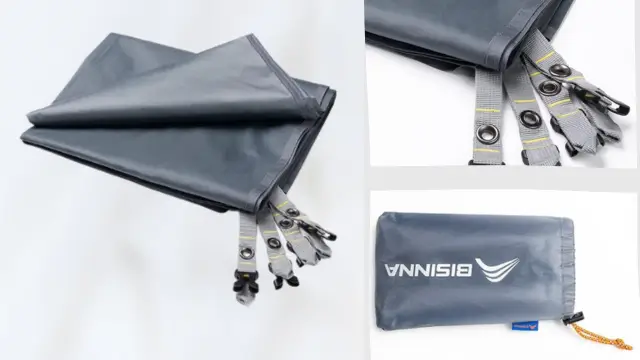
Pros:
- Waterproof
- Multifunctional
- Lightweight
- Easy to carry
Cons:
- May not fit larger tents
- Edges may fray over time
- Limited color options
The BISINNA Waterproof Camping Tarp Footprint Mat is a durable and versatile camping tarp suitable for various outdoor activities.
4. Ayamaya Tent Footprint Waterproof Ground Cloth
The Ayamaya Tent Footprint Waterproof Ground Cloth is a versatile and durable option for family camping trips.
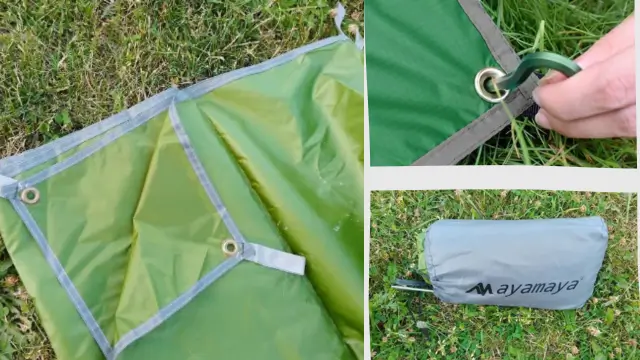
Pros:
- Waterproof PU 3000
- Available in multiple sizes (2-8 person tents)
- Includes tent stakes
- Suitable for family camping
Cons:
- May not fit all tents
- Material may tear easily
- Slightly expensive
C. The Importance of Using a Ground Sheet
Ground sheets play a significant role in enhancing your camping experience. They are designed to protect the floor of the tent from various elements that may shorten the life of your tent or hinder your comfort.
Here’s why we use a ground sheet in a tent:
- Abrasion Protection: Ground sheets are typically made from durable materials like Tyvek or polycro, which can withstand the rough and rugged outdoor terrain. By placing a ground sheet under your tent, you’re adding a protective layer that shields the tent floor from abrasion caused by rocks, sticks, and other sharp objects.
- Moisture Barrier: A ground sheet acts as a barrier between the damp ground and the floor of your tent. It helps to keep the interior of the tent dry by preventing moisture from seeping through the tent floor, ensuring you have a dry and comfortable place to sleep.
- Puncture Prevention: Tent floors can be susceptible to punctures from sharp objects found on the ground at camp sites. Ground sheets provide an added layer of protection, reducing the risk of punctures and tears in your tent floor.
- Adding Longevity to Tent Life: By protecting the tent floor from abrasion, moisture, and punctures, a ground sheet can significantly extend the lifespan of your tent. It’s a lot more cost-effective to replace a ground sheet than a whole tent.
- Enhancing Comfort: A ground sheet can also add a bit of cushioning, providing an extra layer between you and the hard ground. This can make your camping experience more comfortable.
A ground sheet is a valuable addition to any camping setup. It not only protects your tent but also enhances your comfort, making your outdoor adventures more enjoyable.
D. Attaching a Ground Sheet Using Tent Clips
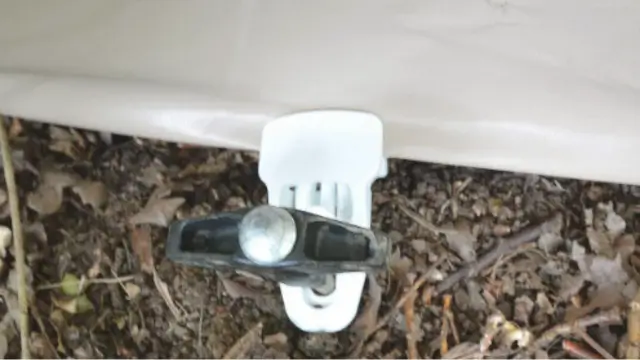
Tent clips are a prevalent method for fastening a ground sheet to a tent. These handy devices connect the sides of your tent directly to the ground sheet, keeping both structures secure and in place.
How to Attach a Ground Sheet Using Tent Clips
- Lay out the groundsheet underneath the tent floor. Make sure it is centered and the edges extend just beyond the tent floor perimeter.
- Starting at one corner, attach a tent clip to the groundsheet by threading the elastic loop on the clip through the grommet or reinforced point on the groundsheet corner.
- Attach the other side of the tent clip to the corresponding tent floor corner by clipping it to the pole attachment point. Repeat this process for all 4 corners.
- For additional security, attach tent clips along the sides of the groundsheet as well. Space them out every 12-18 inches. Thread the elastic loops through reinforced points or grommets along the groundsheet edges and clip them to the tent floor.
- Make sure the groundsheet is pulled taut underneath the tent floor once all clips are attached. Adjust and tighten the clips as needed.
- Stake out the groundsheet around the perimeter using tent stakes. This will keep it firmly in place.
- When breaking down the tent, simply detach the tent clips and groundsheet when dismantling the tent.
Challenges When Using Tent Clips
- Suitability: Not all tents are designed to accommodate tent clips. Tents with non-standard shapes or made from certain materials might not be compatible with this method, so it’s important to verify beforehand that your tent can safely and effectively use tent clips.
- Handling Difficulty: Tent clips can sometimes be tricky to handle, especially in windy or cold conditions when your fingers may be less nimble.
- Compatibility Issues: Not all types of ground sheets or tents are suitable for tent clips. Some materials may be too thick or thin for the clips to hold securely, potentially causing damage.
- Need for Spares: Tent clips can get lost or break. Always have extra clips on hand to avoid being left in a lurch in the middle of your camping trip.
- Positioning: Tent clips need to be correctly placed to distribute tension evenly across your ground sheet. Misaligned clips can lead to uneven pressure points, potentially damaging your tent or ground sheet over time.
With a little bit of practice and careful planning, using tent clips can be a highly efficient method to secure your ground sheet to your tent.
E. Attaching a Ground Sheet Using Groundsheet Pegs
While not as widespread as tent clips, groundsheet pegs provide a reliable and often more secure solution for securing a ground sheet, particularly in varied terrain.
Unlike tent clips, which attach the tent to the ground sheet, pegs physically anchor the ground sheet into the ground, providing a firmer hold.
How to Attach a Ground Sheet Using Groundsheet Pegs
- Clear the area of debris to prevent damage to the ground sheet.
- Lay out the ground sheet on the ground.
- Use groundsheet pegs to secure the four corners of the ground sheet to the ground.A mallet or hammer may be required for this task, depending on the hardness of the ground.
- Ensure the ground sheet is flat and taut.
- If setting up a tent over the ground sheet, consider doubling the ground sheet for added protection against sticks and stones.
- When setting up the tent, ensure that all corners and edges of the ground sheet are tucked underneath the tent to prevent rainwater from pooling and seeping into the tent.
- Check for any exposed corners or edges of the ground sheet, and make sure they are properly covered by the tent.
- This setup provides a basic and effective groundsheet layout.
Challenges and Considerations When Using Groundsheet Pegs
- Ground Hardness: In hard or rocky terrain, driving the pegs into the ground may be more challenging. You may need a mallet or hammer to assist with this process.
- Stability: Ensure that the pegs are firmly anchored in the ground to provide stability. Loose pegs can lead to the ground sheet shifting or coming loose during windy conditions.
- Multiple Layers: If camping on rough terrain or expecting extreme weather conditions, using multiple layers of ground sheets and pegging them together can provide added protection and stability.
- Tripping Hazard: Take caution when placing the pegs to avoid creating a tripping hazard around your tent. Make sure they are securely in the ground and not protruding.
Groundsheet pegs offer a secure method to keep your ground sheet in place, especially when camping in various terrains.
With proper attention to stability and caution when placing the pegs, this method can effectively secure your ground sheet to your tent.
F. Attaching a Ground Sheet Using the Tent Itself
A more recent trend in camping circles involves using the tent’s weight to secure the ground sheet. To do this, lay the ground sheet out and stand the tent above it.
At every point where you want to anchor the tent on the ground, you would link the anchor through the corner of the tent and fasten it to the base. This way, the tent and ground sheet are unified and cannot move independently.
Challenges and considerations When Using The Tent Itself to Secure The Ground Sheet
- Tent Compatibility: Not all tents are compatible with this method. Tents that require certain flexibility or have specific design features may not be suitable for this approach. It’s always best to check whether your tent is suitable for this method before attempting it.
- Proper Alignment: Ensure that the corners of the ground sheet and the tent align perfectly to create a secure attachment. Misalignment may result in areas of the ground sheet being exposed or not properly secured.
- Rainwater Channeling: When using this method, be mindful of how rainwater might flow between the ground sheet and the tent. Check that the ground sheet is tucked properly under the tent to prevent rain from seeping in.
- Limited Flexibility: This method may not be suitable for tents that require flexibility and adjustments, such as freestanding tents. It works best with tents designed for this specific attachment method.
- Weight Distribution: Take care to distribute the weight evenly across the ground sheet to prevent any excessive stress on specific areas. Uneven weight distribution could lead to tearing or damage to the ground sheet.
Using the tent itself to secure the ground sheet can be a convenient and efficient method. Just ensure proper alignment, consider rainwater channeling, and distribute the weight evenly for a secure and reliable attachment.
G. Additional Tips
- Weather conditions: If you are camping in wet or windy conditions, it is especially crucial to secure your ground sheet properly. The weather can play a significant role in the stability of your tent, and a well-secured ground sheet can provide additional protection against the elements.
- Built-in ground sheets: For those using a tent with a built-in ground sheet, it’s imperative to regularly check the sheet’s condition. Make sure that there are no rips or tears that could compromise the tent’s integrity and your comfort.
- Size and material: If you are using a separate ground sheet, ensure that it is the right size for your tent. A ground sheet that is too large or too small can lead to problems with water runoff and stability. Similarly, consider the material of your ground sheet. It should be durable and able to withstand the wear and tear of your camping adventures.
- Storing: When packing up your tent, remember to fold the ground sheet carefully and store it in a dry place. Proper storage can prevent mildew and extend the lifespan of your ground sheet, readying it for your next outdoor excursion.
H. Extra Pointers
- Before embarking on your camping trip, it’s a good idea to practice attaching the ground sheet at home. This will make the setup at the campsite smoother and more efficient.
- If you choose to secure your ground sheet using groundsheet pegs, ensure they are firmly set but not overly tight, which could cause unnecessary strain on the ground sheet and the tent.
- If you’re using the tent to pin the ground sheet down, be mindful of the tent’s corners. Ensuring the corners align perfectly prevents any part of the ground sheet from being exposed to the elements, which could lead to potential damage.
- Don’t forget that ground sheets have versatile uses. They can be used under sleeping bags, picnic blankets, and more, providing a damp-free surface for your outdoor activities.
Investing time in correctly securing a ground sheet to your tent will not only extend the life of your tent but also enhance your camping experience, protecting your outdoor adventure from unpredictable weather conditions. Enjoy your journey into the wilderness!
Conclusion
The best way to attach a ground sheet depends on your tent type, weather, and preferences. Always secure it well to prevent shifting during camping.
We’re always looking to learn more about different camping experiences and strategies. Do you have any questions about ground sheets? Any tips or stories about securing them that you’d like to share?
Please feel free to leave them in the comments below. We’d love to hear from you!
Related Articles:
Increasing the R-Value of Your Sleeping Pad
Best Way to Keep Tent Carpet in Place
How To Stop Slipping Off Sleeping Pad